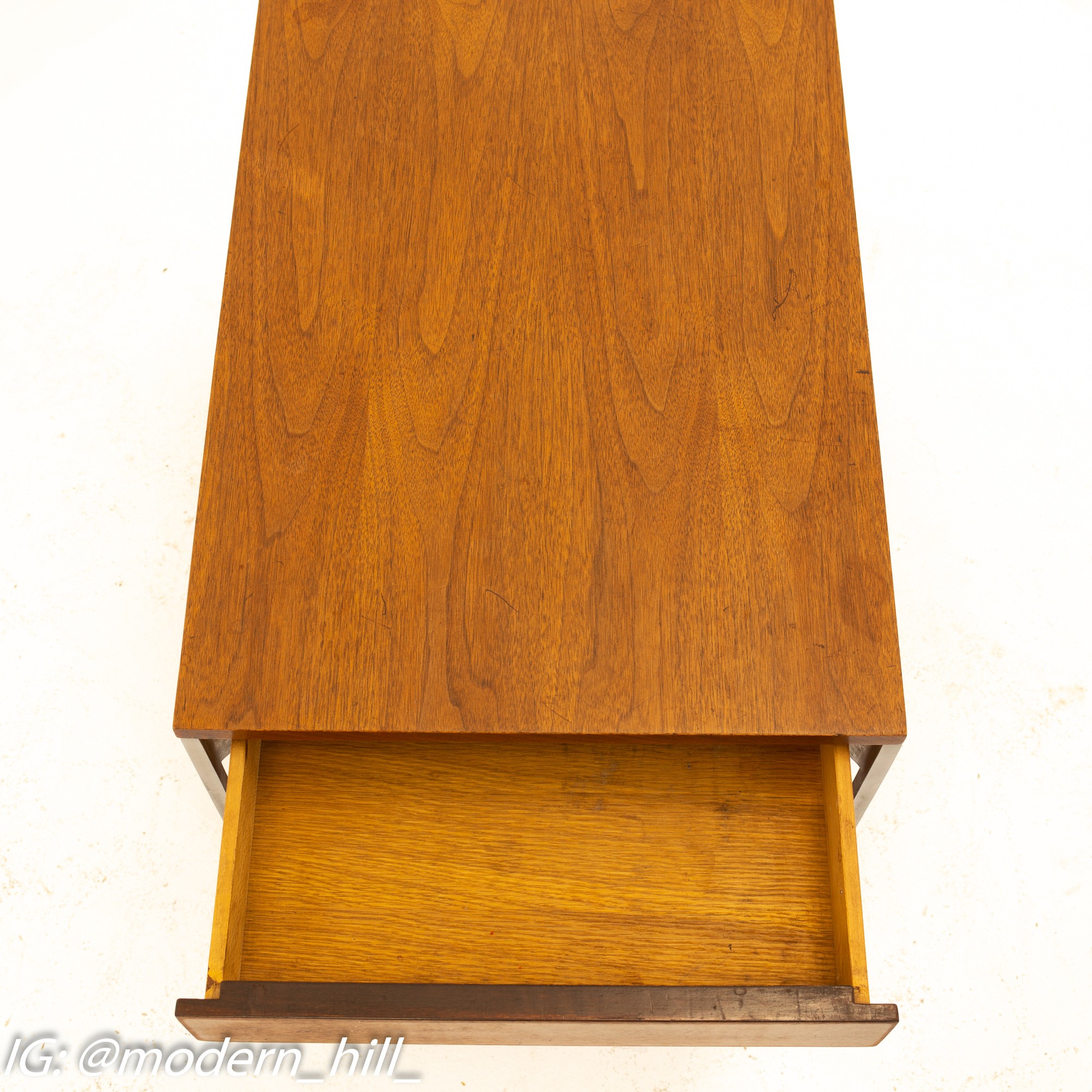George Nelson
Inventor of the Family Room
George Nelson (1908-1986) was an influential American industrial designer, architect, and writer who significantly shaped the mid-century modern design movement. He is best known for his work with the renowned furniture company Herman Miller, where he served as Design Director from 1947 to 1972. During his tenure, Nelson collaborated with some of the most prominent designers of the era, including Charles and Ray Eames, Isamu Noguchi, and Alexander Girard.
Early Life and Education
George Nelson was born in Hartford, Connecticut, in 1908. He developed an interest in design at an early age, building model houses and drawing detailed plans for his creations. Nelson pursued architecture at Yale University, graduating in 1928 with a Bachelor of Arts degree and later obtaining his Bachelor of Fine Arts in Architecture in 1931.
European Influence and the Birth of a Design Career
In 1932, Nelson won the prestigious Rome Prize, allowing him to travel and study in Europe for two years. During his time in Europe, he encountered the work of modernist architects and designers such as Le Corbusier, Mies van der Rohe, and Walter Gropius, which profoundly influenced his design philosophy.
Upon returning to the United States, Nelson worked as an architectural writer and editor for several publications, including Architectural Forum, where he served as an associate editor from 1935 to 1944. During this time, he met and interviewed D.J. De Pree, the founder of Herman Miller. This encounter eventually led to his appointment as the company's Design Director in 1947.
Herman Miller and the Golden Age of Mid-Century Modern Design
Under George Nelson's leadership, Herman Miller became one of the most influential furniture manufacturers of the mid-century modern era. Nelson introduced a design philosophy focused on functionality, simplicity, and innovation. He believed that good design should solve problems and improve everyday life. This approach resonated with the post-World War II consumer market, eager for new, modern designs that reflected a sense of optimism and progress.
Some of Nelson's most iconic designs include:
The Platform Bench (1946): A versatile, multipurpose bench with a minimalist slatted wood top and sleek metal legs.
The Ball Clock (1949): A playful, sculptural wall clock featuring a series of colorful spheres connected by metal rods.
The Bubble Lamp series (1952): A collection of lighting fixtures made from a plastic polymer, creating a soft, diffused glow.
The Coconut Chair (1955): A unique, comfortable lounge chair with a fiberglass shell resembling a coconut shell.
The Marshmallow Sofa (1956): A whimsical sofa featuring a series of round, upholstered cushions supported by a metal frame.
The Sling Sofa (1964): A sleek, low-profile sofa with an aluminum frame and leather upholstery.
The Pretzel Chair (1952): This unique sculptural chair is crafted from bent plywood, forming a distinctive, pretzel-like shape. It is often paired with a cushioned seat for added comfort.
The Swag Leg Collection (1958): A series of tables and desks characterized by their unique swagged legs, which are made by bending thin metal tubes. The collection includes a dining table, work table, and desk, each featuring a minimalist design and a combination of metal, wood, and laminate materials.
The Thin Edge Collection (1952): This range of storage furniture features clean lines, slim profiles, and minimal hardware. The collection includes dressers, cabinets, and credenzas, all designed with functionality and simplicity.
The Comprehensive Storage System (CSS) (1959): A modular storage solution that allows for customization and adaptability. The CSS features various shelving units, cabinets, and storage modules arranged in different configurations to suit individual needs.
George Nelson's work has left a lasting impact on the design world, and his furniture continues to be celebrated and admired today. His innovative designs, commitment to functionality, and ability to create timeless, appealing furniture have cemented his place as one of the most influential designers of the mid-century modern movement.
























